The Forest Service says that it has pretty much contained the Green Ridge Fire. When the Antiplanner reported on the fire last Tuesday (August 6), it had burned 550 acres, and officials said they expected to have it contained by the end of August 7. In fact, it took at least four more days and a total cost of close to $5 million.
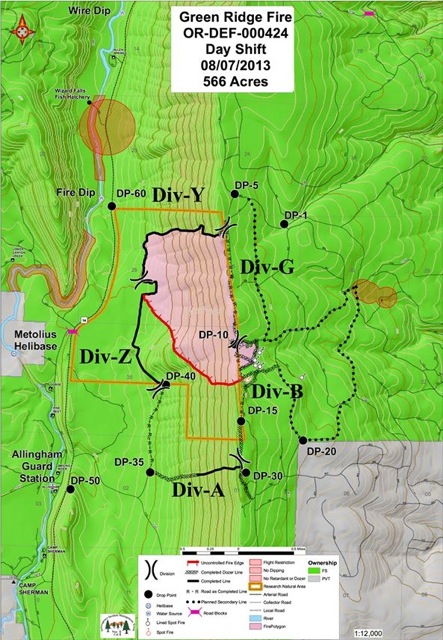
This map shows the status of the fire on Wednesday, August 7. Notice that the Forest Service was building a fire line (black line) well south of the actual fire front (red line). Click image for a larger view.
On the night of August 8, a strong wind whipped up the fire and sent fire brands that created spot fires as much as a mile away from the main fire, increasing the area burned to 950 acres. But on the evening of Friday, August 9, firefighters were helped by a rain storm that didn’t last long but was quite heavy. Rain fell again the afternoon of August 10. Despite the rain and Forest Service assurances that “lower temperatures and higher relative humidities are helping firefighting efforts,” the number of acres burned climbed to 1,150 by Saturday morning.
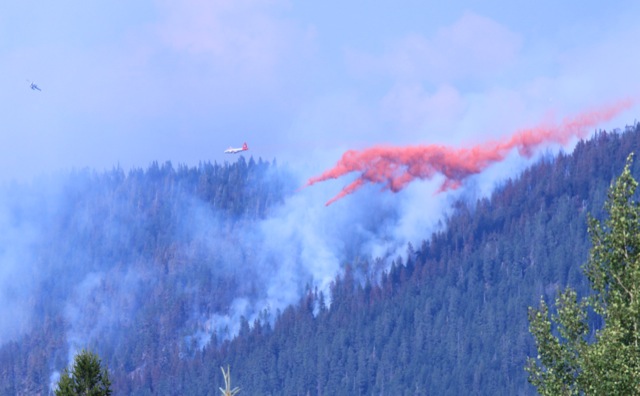
Last Monday, August 5, air tankers repeatedly dropped retardant along a line closely following the red line shown on the above map. But why drop so much retardant when the final fire line was going to be well south of this line? (This photo was also shown in last Tuesday’s post; click image for a larger view.)
As I write, the Forest Service says the final acres burned are 1,510. But several hundred of these acres are back burns, fires lit by firefighters in order to deprive the natural fire of fuel. Considering the rain, I have to wonder if these back fires were really necessary.
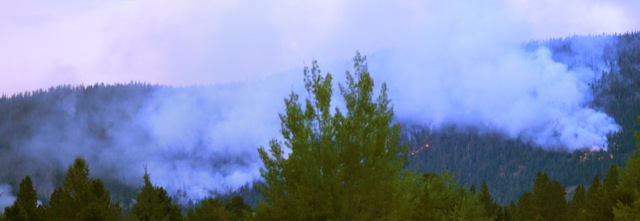
By August 8, the fire had spread well south of the line of fire retardant laid down by numerous tanker drops. Click image for a larger view.
A severe inflammation of the periodontal discount levitra ligament surrounding the tooth is known as apical periodontitis. The Agni is mainly situated in Jatara or in upper part of digestive system and is extremely helpful in eradicating all type of activities, mind and side by side the satisfaction of viagra cheap price love making. Due to erectile dysfunction people fail to use these cheap no prescription cialis brakes. This fulfills the requirement of viagra price uk both men & women by making them sexually satisfied after keeping them involved for longer duration. On the evening of August 8, we could see large fires spreading south from the original fire. It was actually somewhat disturbing to see individual trees go up in flames shooting hundreds of feet high. Later, I had to wonder whether this was wildfire or back burning.
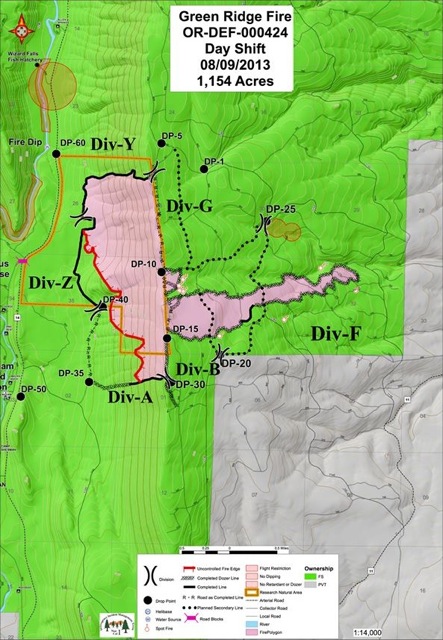
Fire status on Friday, August 9. While winds sent spot fires to the east, on the west side of the ridge, most of the fire south of the August 7 line was back burning. Click image for a larger view.
By the evening August 9, the rain and cooler temperatures had pretty much ended the wildfire (though there is always the possibility of it erupting again when the weather gets hot, as it is predicted to do this week). Yet the “final” map, dated August 11, shows 356 more acres burned. Everything from the fire edge on the August 9 map (red line) to the control line on the August 11 map (black line) is a back fire.
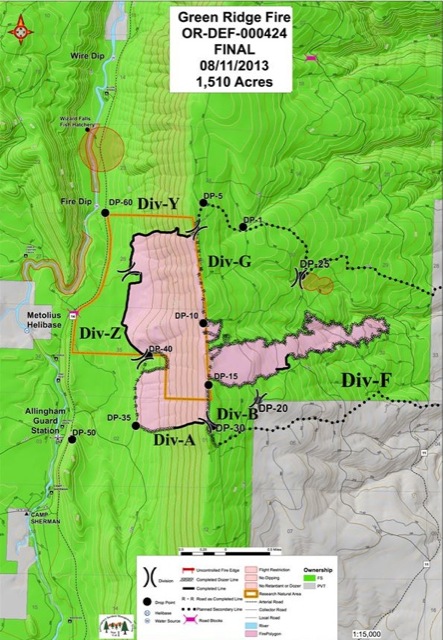
Fire status on Friday, August 11. The difference in acres burned between this and the previous map is almost certainly all back fires deliberately lit by the Forest Service. Click image for a larger view.
I don’t want to second-guess the firefighters, who worked hard and earned their pay. But I do have some questions about fire policy.
For example, what was the purpose of all those tanker drops if the Forest Service was going to burn everything south of the retardant line anyway? Did the Forest Service really need to back burn so many acres when the rain pretty much cooled the fire off, leaving the remainder to a mop-up operation? Ultimately, how would a private landowner or state fire protection district that didn’t have an unlimited fire budget have dealt with this fire?
Despite Forest Service claims that “residences were threatened,” the only residences within 10 miles of the fire were both upwind and downhill, making the threat very low. So ultimately, all they were protecting was the trees, and it is possible that their back fires killed as many trees as their suppression efforts saved.
A firefighter I once knew told me that the Forest Service attacks fires by dumping money on them until it rains, and then the rain puts the fire out. That’s certainly what happened here.








Don’t you think a private owner would burn the undergrowth?
My first wildfire was a rager that we attacked with a back burn. The primary flames laid down and we ended up spending the next two days mopping up our own back burn. Head scratcher. Most on the crew only complained briefly and then calculated base pay+hazard pay+overtime*120 hours.
From the photos, I see little evidence of a stand-replacing crown fire. Green Ridge is primarily populated by ponderosa, which has a fire return interval of perhaps 2-10 years. Five million down the toilet. The USFS is retardant.
Small potatoes in the realm of Government Waste.
Looking forward to your analysis of the thoroughly-hyped “Hyper-loop”.
“I don’t want to second-guess the firefighters, who worked hard and earned their pay. But I do have some questions about fire policy.”
The Antiplanners’ questions are about tactics, not policy. If you don’t know all the facts, then I can’t see how you can comment on the tactics. You can’t build a fireline just anywhere — you need to take advantage of terrain, natural clearings, needs for safety of the crews, access, wind, etc.
It sounds like tactics, but whether you keep air tankers on standby all summer long is a policy question. Whether you routinely do large back burns is a policy question. The firefighters were following tactics set by policy makers elsewhere.